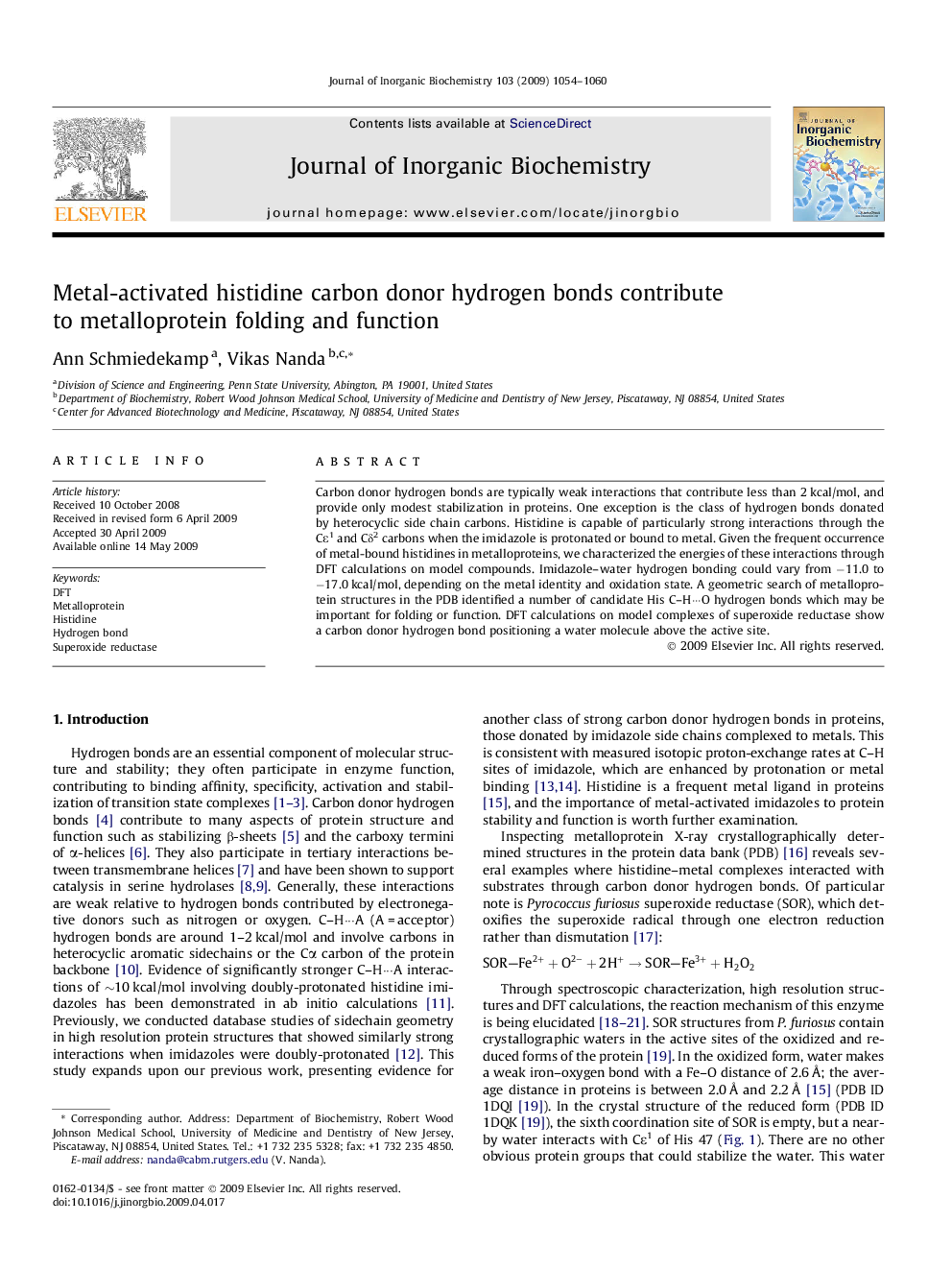| Article ID | Journal | Published Year | Pages | File Type |
|---|---|---|---|---|
| 1318036 | Journal of Inorganic Biochemistry | 2009 | 7 Pages |
Carbon donor hydrogen bonds are typically weak interactions that contribute less than 2 kcal/mol, and provide only modest stabilization in proteins. One exception is the class of hydrogen bonds donated by heterocyclic side chain carbons. Histidine is capable of particularly strong interactions through the Cε1 and Cδ2 carbons when the imidazole is protonated or bound to metal. Given the frequent occurrence of metal-bound histidines in metalloproteins, we characterized the energies of these interactions through DFT calculations on model compounds. Imidazole–water hydrogen bonding could vary from −11.0 to −17.0 kcal/mol, depending on the metal identity and oxidation state. A geometric search of metalloprotein structures in the PDB identified a number of candidate His C–H···O hydrogen bonds which may be important for folding or function. DFT calculations on model complexes of superoxide reductase show a carbon donor hydrogen bond positioning a water molecule above the active site.
